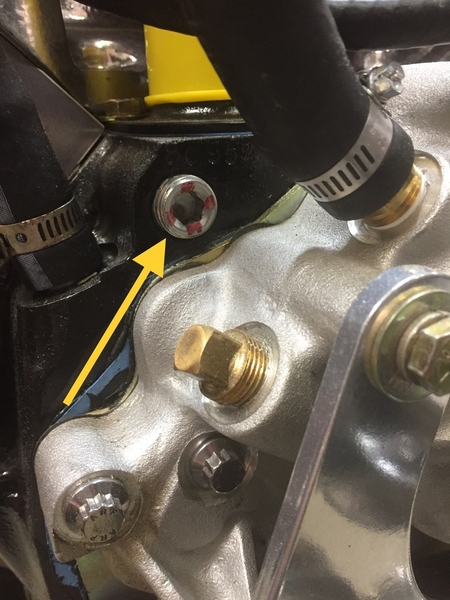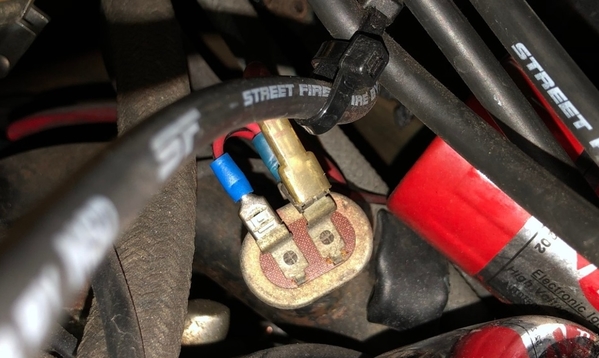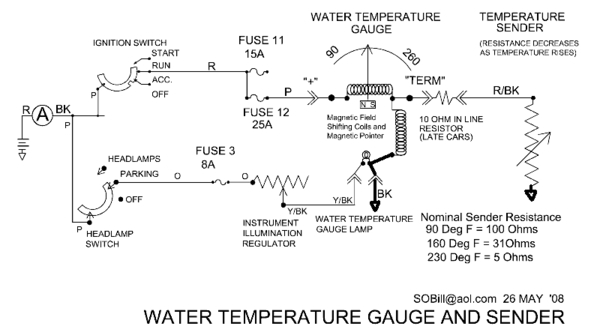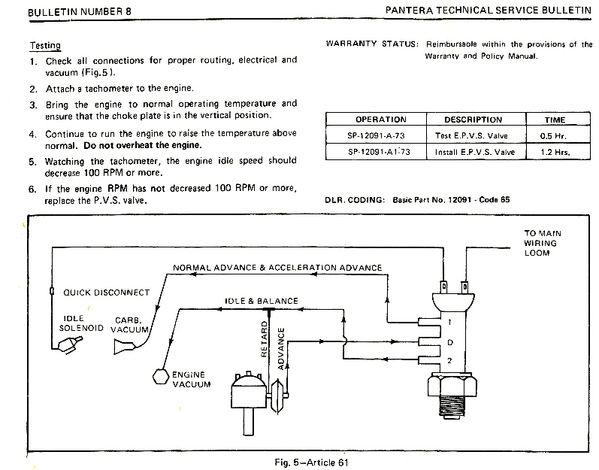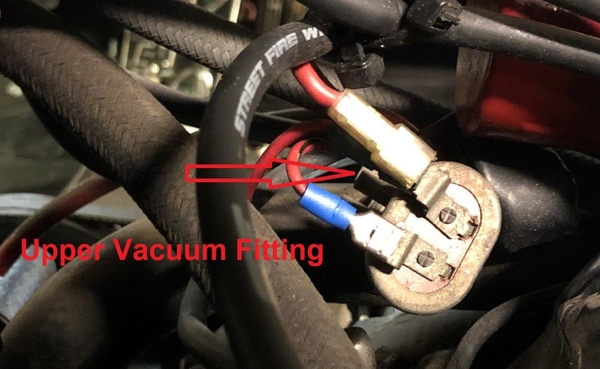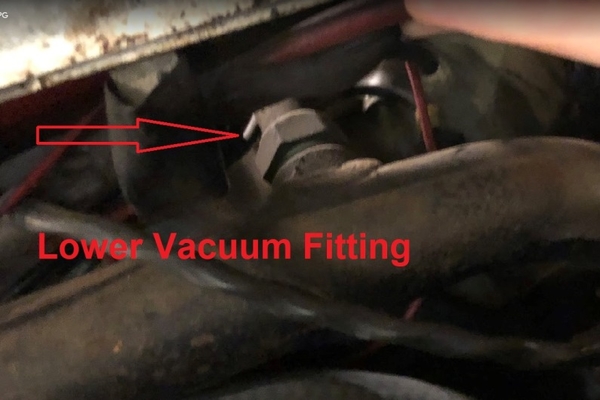Hi all :-)
Followed up on all your good advises and have take more pictures and added to the folder in the link:
http://tinyurl.com/yxjxhlbd
Dismantled the seats, firewall and got access to the front of the engine.
Searched for the temp sensor in the engine block, and found it, not wire on it. Hence either the previous owner disabled it, either because it didn't work or else because he wanted a different solution. I'm leaning toward that....due to the sensor the RED/BLK wire is attached to. (some called it vacuum sensor yesterday). I don't know if it a "vacuum sensor", not even sure I know what such a thing is....but on my car this sensor is place in the middle of a big metal pipe going directly to the water pumo, hence I do beleive it was suppose to work as a temp sensor - at least my guess.
Anyway - I did a resistance meassurement on the temp sensor in the engine block, and the resistance was 373Ohm at a temperature of 22 degress Celcius (71,5 degress Fahrheit). To me that sounds to little, I would have though it should be higher - but if anyone out there know right resistance for the sensor at 22 degress Celcius, I would love to know it. Because it if its not working right, I gotta replace it, if I want to re-wire to this temp sensor, instead of the strange solution being called a vacuum sensor.
Then I continued to do testing of the Temp gauge. I toke the RED/BLK wire from the Temp gauge and placed a resistor between that wire and ground. The results can be see from the pictures in the folder. But to my knowledge it seems the temp gauge works just fine. If anyone looks at the pictures, and mean differently, I would love to hear about it.
So this is how far I got today, based on all your help and good ideas/advises... :-)
a) Would really love to hear from anyone who can tell me how I figure out if the existing temp sensor in the engine block is working as it should? or perhaps how to test it extensively.
b) Also would also like to hear if you all as I, believe the temp gauge works correctly, because then that can be disregarded as a source of failure.
c) Finally, I'm still puzzled about this called "vacuum sensor", was there ever place a sensor in the big metal pipe going to the water pump? or have the previous owner of my car have had he small weird projects and created something peculiar?
As always, thanks for all your interest and help :-)
Cheers
Chris


